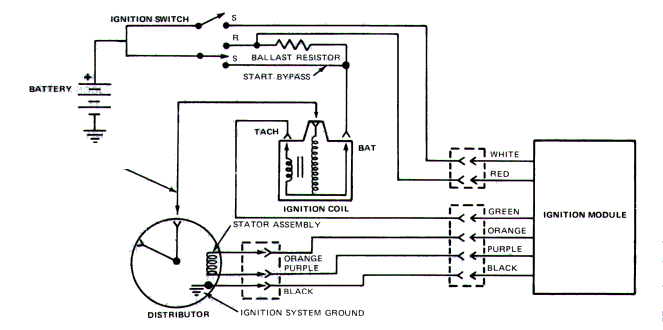|
Duraspark II electronic ignition was used on 1977 to 1984 Ford V-8 passenger car and light truck
engines. This article refers to the Duraspark II control module with a BLUE strain relief bushing,
one 4-pin connector, and one 2-pin connector. Another version of the system has
an additional 3-pin wiring connector, and two YELLOW strain relief bushings. Discussion of
that "dual mode" system will be added later.
Duraspark II uses a variable reluctance magnetic pickup in place of traditional breaker points. The signal from this pickup is amplified by the control module to drive the ignition coil. The module hold a fixed dwell time, and features automatic retard while cranking to reduce the load on the starter motor. The high voltage ignition coil, wider spaced terminals of the distributor cap, and 8mm silicone insulated high tension wires permit the use of wider spark plug gaps. This results in a more powerful spark which is more likely to ignite the air-fuel mixture. Due to the higher voltage operation of the system, silicone dielectric compound should be applied to the insides of the spark plug wire boots, at both the cap and plug ends. This special grease is available at most auto parts stores, or under Ford part # D7AZ-19A331-A. This compound should also be applied to the tip of the distributor rotor. The larger diamter cap and better wires are not required, however, if the older tighter spark plug gaps are maintained. Under some circumstances you may need to retain the old style smaller cap. For example, you might not be able to fit the larger cap under a Monte Carlo bar in an early Mustang, for example. This ignition system offers the benefits of reduced maintenance, smoother engine operation with improved idle, better fuel economy, and reduced emissions. |
Duraspark II Major Components
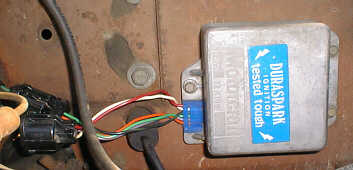
|
The Duraspark II control module has a BLUE strain relief bushing, one 4-pin connector, and one 2-pin connector. Shown here on the firewall of my '72 Bronco. |
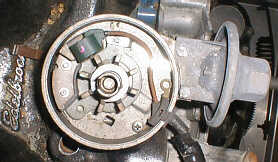
|
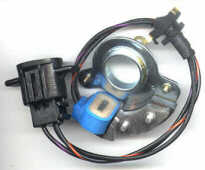
|
| The Duraspark II distributor uses a magnetic pickup in place of traditional breaker points. | |
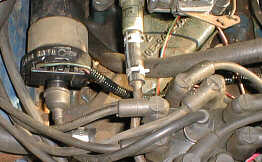
|
The Duraspark II ignition coil is capable of generating a higher voltage than the regular coil. The wiring is attached via a special snap-on connector. Power is supplied to the coil in the same fashion as the older breaker point ignition. |
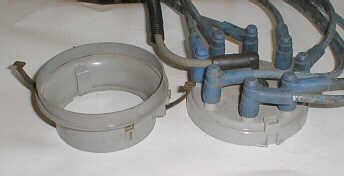
|
The Duraspark II distributor cap is larger in diameter to allow the high tension terminals to be spaced farther apart. This prevents crossfiring with the higher coil voltage. The cap is made in two parts; the lower section is an adapter to fit the standard Ford V-8 distributor body. The rotor is longer and taller fit this cap. |
